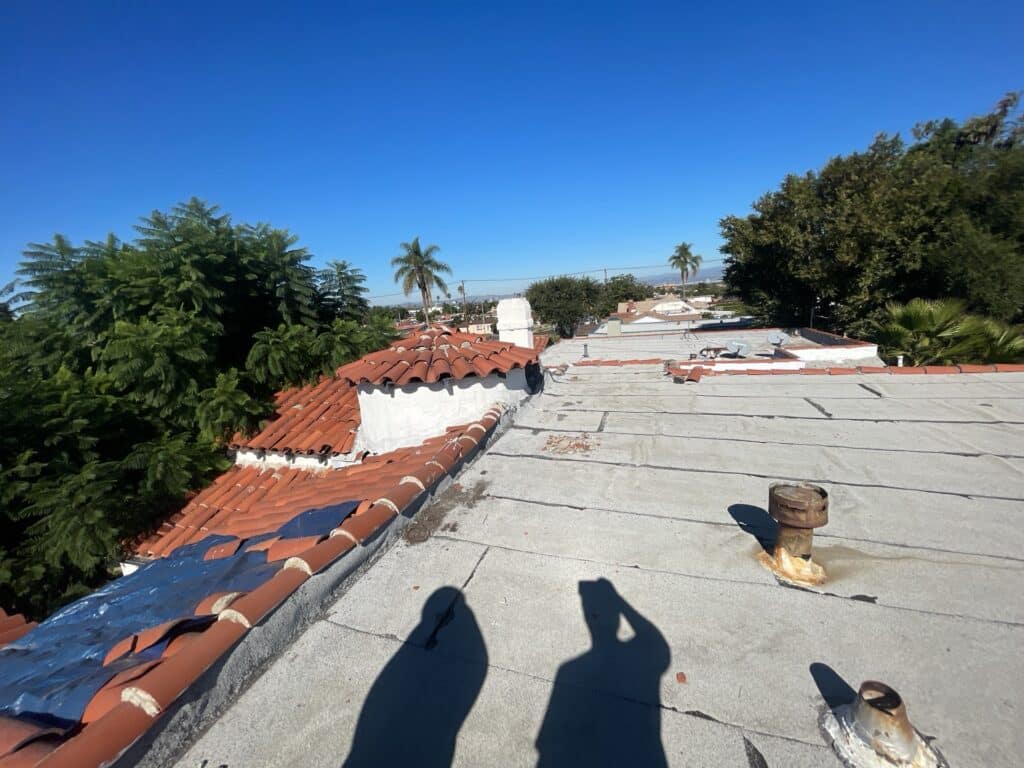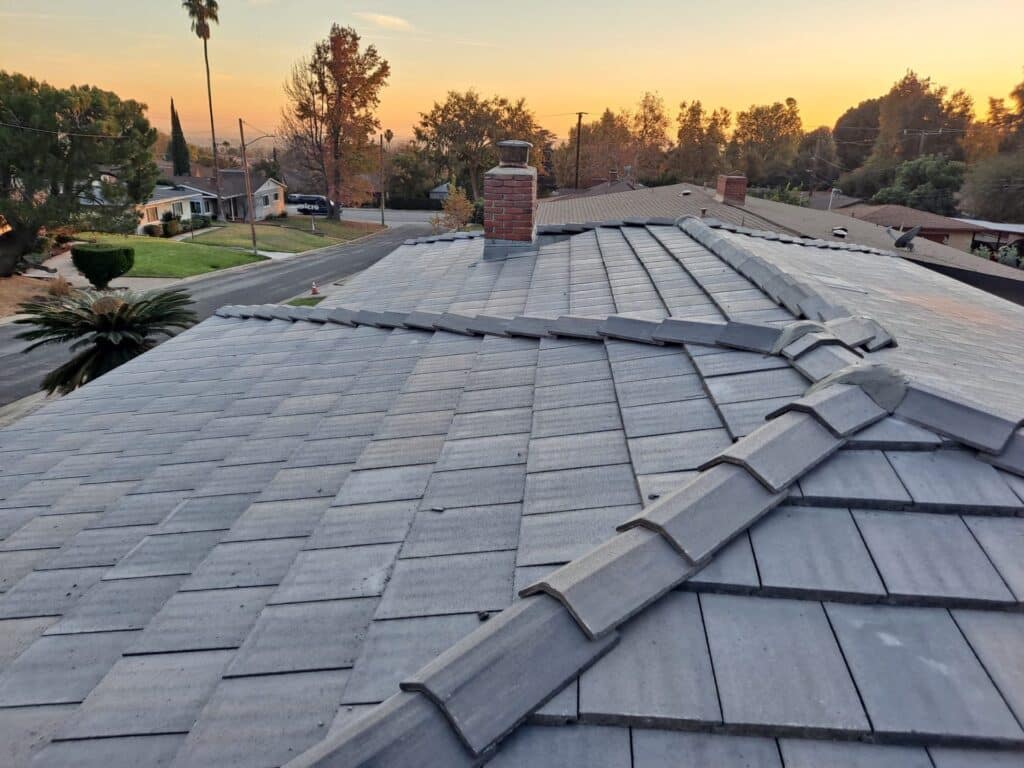• Identify urgent roofing issues with easy spot signs and immediate steps for home protection
• Master temporary fixes with our clear, step-by-step guide on applying emergency repairs safely
• Avoid common DIY pitfalls and learn the importance of professional inspections and services
Recognizing Early Warning Signs
As a homeowner in Glendale, CA, one of your top priorities is maintaining the integrity of your roof, especially given the unique weather patterns of the summer season. Before delving into our step-by-step emergency repair guide, it’s crucial to know what to watch for. Drooping or sagging areas on your roof can signify structural issues, and shingles that are curled, cracked, or missing are a clear call to action. These are not just aesthetic concerns; they hint at underlying vulnerabilities that could lead to serious problems.
Indicators of Immediate Concern
Suspicious stains on ceilings or walls are tell-tale signs of water infiltration and potential leaks, which could swiftly escalate if not addressed. The presence of extra daylight peeking through the roof boards when you’re in the attic is another red flag. It’s essential to not only observe these issues but also take immediate preventive measures, such as placing containers under leaks to catch water and avoid damage to interiors. Always remember, these signs demand prompt attention to prevent more extensive and expensive damage to your home.
Proactive Vigilance is Key
It’s not always a storm that signals the need for roof inspections; sometimes, it’s subtle changes and visible wear that point to an imminent need for repair. By staying vigilant and conducting regular checks of your roof’s condition, you can stay ahead of emergencies. Glendale’s summer sun can be intense, causing materials to deteriorate quicker than you might expect, making it even more important to be proactive. Keep your home secure by knowing the warning signs; this is your first defense against the need for emergency roof repairs.
Embarking on Emergency Repairs
When faced with an emergency roof repair, the first steps you take can make all the difference. Begin by identifying the area and severity of the damage to your roof, which could range from a few loose shingles to a significant portion that’s compromised. Safety is paramount; never climb onto a damaged roof—leave it to the professionals. By acting quickly and wisely, you can mitigate the immediate impact and set the stage for a full, efficient repair.
Ensuring Immediate Action
Once the problem is identified, move to control any interior damage that may occur due to leaks. Use containers to catch dripping water and relocate your possessions to a dry area, safeguarding them from water damage. If the damage is extensive, covering the affected interior spaces with plastic sheeting can provide a temporary barrier against further water ingress. These swift actions can prevent minor issues from developing into larger, more costly ones, buying you valuable time until professional help arrives.
Step 1: Assess the Situation
Begin by identifying the location and severity of the damage. If it’s safe to do so, check your attic or top floor for signs of water penetration, note the extent of visible damage, and take pictures for insurance purposes.
Step 2: Control Interior Damage
Place buckets or containers under leaks and remove any valuables in the affected area to mitigate further property damage. Use plastic sheeting to cover large areas if necessary.
Step 3: Temporary Protective Measures
To temporarily protect your roof, you can apply roofing tape or tarps to the damaged area. Ensure these are secured safely and will not cause further damage or pose safety hazards.
Step 4: Document the Damage
Document all damage thoroughly with photos and detailed notes, as these will be essential for insurance claims and roofing professionals to understand the extent of the emergency repairs needed.
Step 5: Contact Your Insurance Company
Inform your insurance company immediately about the damage. They can guide you through the process of filing a claim and may recommend qualified emergency repair services.
Step 6: Research Reliable Roofers
Look for licensed and insured roofing contractors in Glendale with experience in storm damage and emergency repairs. Check for customer reviews and testimonials to gauge their reliability.
Step 7: Have a Professional Inspection
Hire a professional roofer to conduct a thorough inspection. They can provide a more accurate assessment and recommend necessary repairs or replacements.
Step 8: Schedule Repairs
Once you have all the information and approval from your insurance, schedule the repairs promptly. A reliable roofing company will prioritize your emergency to restore the safety and integrity of your roof.
Steering Clear of Common DIY Roof Repair Mistakes
When faced with emergency roof repairs, homeowners may attempt to remedy the situation themselves. Unfortunately, this well-intended initiative can sometimes lead to further damage if not done correctly. It’s essential to be aware of common pitfalls to ensure that temporary solutions don’t lead to permanent problems.
Mistake 1: Delaying the Initial Assessment
Many homeowners make the mistake of underestimating the severity of roof damage, especially if it doesn’t appear to be urgent. However, small issues can rapidly escalate into serious problems, such as structural damage or mold growth. To prevent this, inspect your roof regularly and particularly after severe weather conditions.
Mistake 2: Inadequate Interior Protection
Failing to protect the interior of your home from water damage is another frequent oversight. A leak can cause significant damage to floors, furniture, and electronics, not to mention the potential for mold development. Always move items to a dry area and use buckets and plastic sheeting as necessary.
Mistake 3: Incorrect Temporary Fixes
Temporary fixes like applying roofing tape or tarps are meant to be short-term solutions. Improper installation can lead to more damage or fall short of providing the protection needed. It’s crucial to apply these measures securely and safely, ensuring they are temporary and do not interfere with proper repairs later.
Mistake 4: Overlooking Documentation
Not documenting damage before repairs can lead to issues with insurance claims and proper repair assessments. Take clear photos and detailed notes of all affected areas. This documentation is your proof of damage and helps ensure you get the coverage and repairs you deserve.
Mistake 5: Delaying Professional Help
Attempting complex repairs without the proper skills can be dangerous and often exacerbates the problem. It’s important to recognize when to call in a professional roofer who can handle the situation safely and efficiently. Roofers have the expertise and tools necessary for effective emergency repairs.
Mistake 6: Not Contacting Insurance Promptly
Homeowners sometimes assume they can handle repairs without involving their insurance company. However, emergency repairs can be costly, and insurance is there to help cover these expenses. Contact your provider immediately to report the damage and understand your coverage options.
Remember, while it’s important to act swiftly during a roofing emergency, avoiding these common mistakes is just as vital to protect your home and finances effectively.
Securing Your Roof Temporarily
While waiting for professional roofing services, there are temporary measures you can employ to safeguard your roof. Applying roofing tape or securing a tarp can offer short-term protection against the elements. It is important to ensure these fixes do not exacerbate the damage or compromise the security of your home.
Document Everything
Before the professionals take over, document the extent of the damage meticulously. Take photographs and make notes of all affected areas, as this information will be pivotal for both the roofing experts and insurance claims. This pre-emptive step is crucial in expediting the repair process and ensuring adequate coverage.



